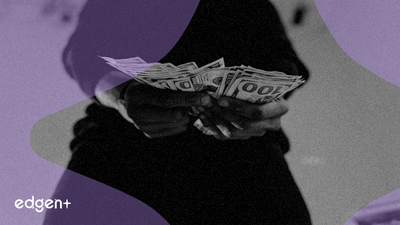Related News

Report: $12B in DeFi Liquidity Sits Idle, Highlighting Widespread Inefficiency
## Executive Summary A new report on the state of Decentralized Finance (DeFi) has exposed critical inefficiencies within its core infrastructure, revealing that as much as $12 billion in digital assets lies dormant in liquidity pools. The analysis indicates that between 83% and 95% of all capital supplied to automated market makers (AMMs) is not being actively used for trading. This widespread capital inefficiency is disproportionately impacting retail participants, with data showing that approximately half of all liquidity providers (LPs) are incurring financial losses. ## The Event in Detail The central issue identified is the phenomenon of **impermanent loss**, a risk inherent to providing liquidity in AMMs where the price of deposited assets changes compared to their value if simply held. According to the findings, these potential losses are not being sufficiently compensated by the trading fees earned. The study highlights that roughly 50% of LPs on major platforms like **Uniswap V3** have suffered negative returns, contributing to a collective deficit exceeding $60 million. This problem is exacerbated by what experts describe as fragmented liquidity. Capital is spread thinly across thousands of isolated pools, many of which fail to attract significant trading volume. An OECD report on the matter confirms this high concentration, noting that the vast majority of trading volume occurs in a "tiny fraction" of available liquidity pools, predominantly on the **Ethereum** blockchain. ## Market Implications The report's findings present a significant challenge to the DeFi ecosystem's long-term viability and its appeal to mainstream investors. The high rate of loss among retail LPs could erode confidence and deter new capital from entering the space, thereby limiting growth. Furthermore, the data suggests that the current AMM model, while innovative, is structurally flawed, failing to provide sustainable returns for a large portion of its user base. This inefficiency represents a substantial opportunity cost and a drag on the overall health of the decentralized economy. ## Expert Commentary Financial analysts and protocol developers have pointed to these figures as evidence of an unsustainable model for retail participants. A study conducted by **Bancor**, a decentralized trading protocol, previously corroborated these findings, noting that 49.5% of LPs on Uniswap V3 experienced negative returns due to impermanent loss. In response, some industry experts are championing **concentrated liquidity** as a potential solution. This mechanism allows LPs to allocate their capital within specific price ranges where most trading occurs, rather than across an infinite spectrum. By concentrating liquidity, providers can theoretically improve capital efficiency and earn higher fees from the same amount of assets, offering a more active way to manage risk and potentially mitigate impermanent loss. ## Broader Context This liquidity crisis is symptomatic of a broader structural issue within DeFi: market fragmentation. Even on integrated blockchains, liquidity remains siloed in isolated pools, preventing capital from flowing to where it is most needed. The over-concentration of activity in a handful of protocols and pools indicates a market that is still maturing. As the DeFi sector evolves, addressing these fundamental inefficiencies will be critical for fostering a more stable, efficient, and trustworthy financial ecosystem capable of supporting sophisticated, high-volume trading.

Monad Protocol Reaches $188 Million Target in Landmark Coinbase Public Token Sale
## Executive Summary Monad, an upcoming blockchain protocol, has successfully reached its $188 million subscription target for its MON token via a public sale on Coinbase. The event is the inaugural launch on Coinbase's new regulated token sale platform and represents a significant milestone: the first public offering of its kind directed at U.S. retail investors in over seven years. The strong investor demand and novel platform structure indicate a potential shift in capital formation strategies within the digital asset ecosystem, moving toward more regulated and transparent models. ## The Event in Detail The public sale for the Monad (MON) token on Coinbase progressed swiftly, with reports indicating it surpassed $130 million midweek before ultimately reaching its $188 million goal. The sale, which has a limited duration and is scheduled to conclude within hours, was structured to facilitate broad community participation. According to Monad, the primary objective of the sale is to decentralize the project's ownership by distributing the MON token widely among its user base and community. ## Financial Mechanics and Structure Coinbase selected Monad to be the first project on its renewed public sale platform, which is designed to operate within U.S. regulatory frameworks. This model distinguishes itself from previous fundraising mechanisms by incorporating specific features aimed at ensuring market stability and fairness. Key structural elements include long vesting schedules for insiders and major contributors to prevent premature selling pressure, transparent capitalization tables, and sale rules that reportedly favor smaller retail accounts. This structure is engineered to create an orderly market entry for the token and align with regulatory expectations for investor protection. ## Market Implications The successful execution of the Monad sale on a regulated U.S. exchange has significant implications for the broader crypto market. It re-establishes a viable, compliant pathway for blockchain projects to raise capital directly from retail investors, a channel that had been largely closed for nearly a decade due to regulatory scrutiny. For Coinbase, it opens a new business line and reinforces its position as a central hub for the regulated crypto economy. The model, if replicated, could reduce reliance on venture capital and private sales, potentially leading to more equitable token distributions and greater project decentralization from inception. ## Broader Context and Precedent The Monad sale occurs amid a renewed interest in token generation events, albeit with more sophisticated structures. Last month, rival blockchain project **MegaETH** raised $50 million at a $1 billion valuation through Sonar, a token sale venue associated with the early-stage investment platform Echo. However, Monad's decision to partner with **Coinbase** for a public-facing, regulated sale in the U.S. represents a distinct strategy. It prioritizes regulatory compliance and broad retail access over the more exclusive, venture-focused models that have dominated the last market cycle. This approach may set a new precedent for how U.S.-based blockchain projects approach decentralization and community fundraising.

Solo Bitcoin Miner Earns $266,000 Reward With 1.2 TH/s Hashrate, Highlighting Network Probability
## The Event in Detail An independent Bitcoin miner successfully solved block 924,569, receiving the full block reward of 3.146 BTC, valued at approximately $266,000 at the time of the event. The miner accomplished this feat with a hashrate of only 1.2 TH/s, an exceptionally low amount of computing power relative to the total network hashrate. This makes the successful block validation a statistically rare occurrence. ## Financial Mechanics and Probability Bitcoin mining is a process where miners compete to solve a complex mathematical problem, with the winner receiving the right to add the next block to the blockchain and claim the associated reward. Success is directly proportional to a miner's share of the total network hashrate. Given the current total network hashrate is measured in hundreds of exahashes per second (EH/s), a 1.2 terahash per second (TH/s) operation represents a negligible fraction of the total power. To illustrate the odds, analysis from April, when network difficulty was lower, estimated that a 1.2 TH/s machine had a daily probability of just 0.00068390% of successfully mining a block. This event is therefore comparable to winning a lottery. The hardware likely used, such as a **Bitaxe Gamma 601** which runs on a **BM1370 ASIC** chip, is notable for its low power consumption (15-17W) and accessibility, demonstrating that participation in the network is possible with minimal capital expenditure on hardware. ## Market Implications This event has limited direct impact on the price of **Bitcoin** but carries significant weight for the network's decentralization narrative. It provides a proof-of-concept that the **Bitcoin** protocol functions as designed, allowing any participant, regardless of scale, a chance to earn rewards. While several solo miners have achieved similar success this year, the dominant force in mining remains large, publicly traded mining corporations and private mining pools that aggregate hashrate from thousands of participants to smooth out reward variance. ## Broader Context While celebrated as a win for the individual, this event does not fundamentally alter the economic realities of the mining industry. The business model of professional mining operations is built on scale, efficiency, and predictable revenue streams, which is why the pool mining model prevails. Solo mining remains a high-risk, high-reward endeavor with an extremely low probability of success. However, these occurrences serve as a powerful reminder of the underlying permissionless nature of the **Bitcoin** network, a core tenet of its value proposition. They underscore that, at its base layer, the network remains open to all participants.
